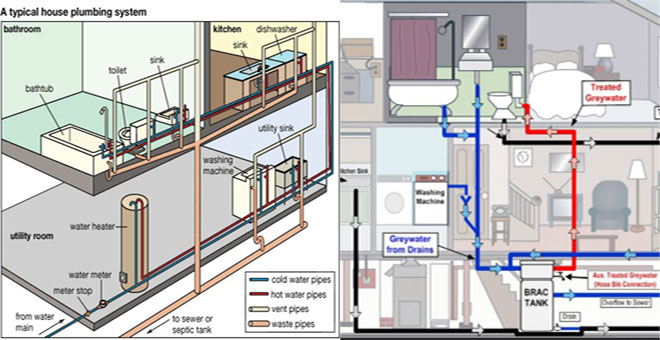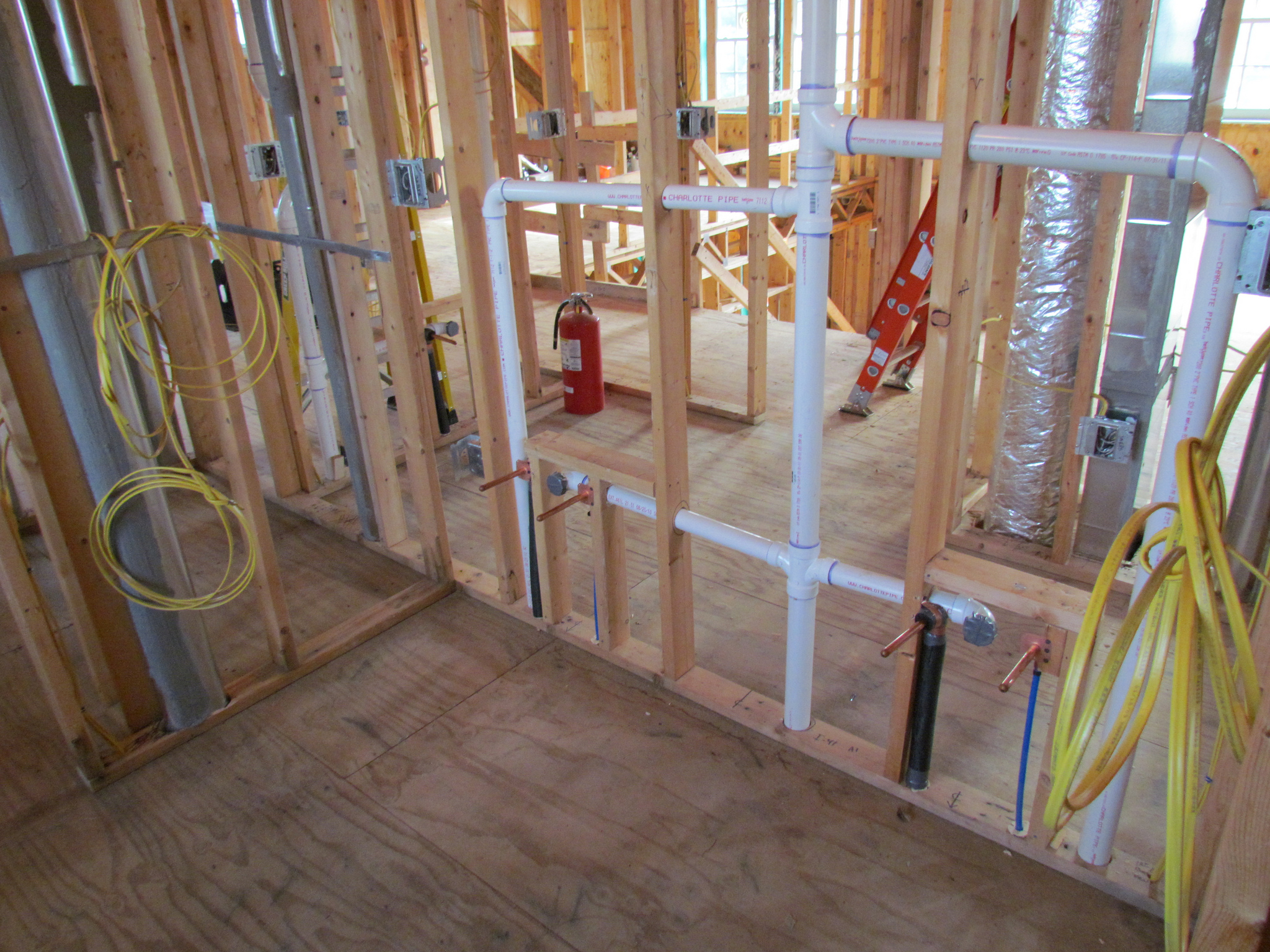The Essential Components of Your Property's Plumbing System
The Essential Components of Your Property's Plumbing System
Blog Article
We have found this post about The Inner Workings of Your Home's Plumbing below on the net and think it made perfect sense to talk about it with you in this article.

Recognizing how your home's pipes system works is necessary for every house owner. From supplying tidy water for drinking, cooking, and bathing to safely eliminating wastewater, a properly maintained pipes system is essential for your household's health and wellness and convenience. In this extensive guide, we'll check out the complex network that composes your home's pipes and deal tips on maintenance, upgrades, and handling usual issues.
Introduction
Your home's plumbing system is more than just a network of pipelines; it's a complicated system that guarantees you have access to clean water and reliable wastewater removal. Recognizing its elements and how they work together can assist you stop pricey fixings and make sure everything runs smoothly.
Basic Components of a Plumbing System
Pipes and Tubing
At the heart of your plumbing system are the pipes and tubing that bring water throughout your home. These can be made from numerous products such as copper, PVC, or PEX, each with its benefits in regards to toughness and cost-effectiveness.
Components: Sinks, Toilets, Showers, etc.
Fixtures like sinks, commodes, showers, and bath tubs are where water is made use of in your house. Recognizing just how these components attach to the pipes system aids in detecting issues and preparing upgrades.
Shutoffs and Shut-off Points
Shutoffs manage the flow of water in your plumbing system. Shut-off shutoffs are critical throughout emergency situations or when you need to make repair services, enabling you to isolate parts of the system without interrupting water flow to the whole residence.
Water System System
Key Water Line
The main water line attaches your home to the metropolitan water system or a private well. It's where water enters your home and is distributed to numerous fixtures.
Water Meter and Pressure Regulatory Authority
The water meter procedures your water usage, while a stress regulatory authority guarantees that water moves at a risk-free pressure throughout your home's plumbing system, stopping damage to pipelines and fixtures.
Cold Water vs. Hot Water Lines
Recognizing the distinction in between cold water lines, which supply water directly from the primary, and hot water lines, which lug heated water from the hot water heater, aids in fixing and planning for upgrades.
Drain System
Drain Piping and Traps
Drain pipes lug wastewater away from sinks, showers, and bathrooms to the sewer or sewage-disposal tank. Traps stop sewer gases from entering your home and additionally trap particles that can trigger obstructions.
Air flow Pipelines
Ventilation pipes enable air right into the water drainage system, protecting against suction that could slow down drainage and trigger traps to vacant. Proper ventilation is necessary for maintaining the honesty of your plumbing system.
Relevance of Appropriate Water Drainage
Guaranteeing appropriate drainage stops back-ups and water damage. Regularly cleaning up drains pipes and preserving catches can stop costly repair services and extend the life of your pipes system.
Water Heating System
Types of Hot Water Heater
Water heaters can be tankless or typical tank-style. Tankless heating units warmth water on demand, while storage tanks save warmed water for immediate usage.
Updating Your Plumbing System
Reasons for Updating
Upgrading to water-efficient components or changing old pipes can boost water quality, decrease water costs, and increase the value of your home.
Modern Plumbing Technologies and Their Benefits
Check out modern technologies like smart leak detectors, water-saving commodes, and energy-efficient water heaters that can conserve cash and minimize environmental effect.
Cost Considerations and ROI
Compute the in advance prices versus lasting savings when thinking about pipes upgrades. Numerous upgrades spend for themselves via reduced utility bills and fewer repair services.
Just How Water Heaters Attach to the Pipes System
Understanding how water heaters link to both the cold water supply and warm water circulation lines aids in identifying issues like insufficient hot water or leaks.
Maintenance Tips for Water Heaters
Frequently flushing your water heater to remove sediment, checking the temperature level setups, and evaluating for leakages can extend its life expectancy and boost power effectiveness.
Common Plumbing Problems
Leakages and Their Reasons
Leakages can happen as a result of aging pipelines, loose fittings, or high water pressure. Addressing leaks promptly stops water damages and mold growth.
Clogs and Clogs
Obstructions in drains pipes and toilets are usually brought on by purging non-flushable products or a buildup of grease and hair. Making use of drainpipe screens and being mindful of what goes down your drains pipes can stop blockages.
Indications of Plumbing Troubles to Look For
Low water stress, slow-moving drains pipes, foul odors, or unusually high water bills are indicators of possible plumbing problems that need to be attended to immediately.
Plumbing Upkeep Tips
Routine Evaluations and Checks
Arrange annual pipes assessments to catch issues early. Seek indicators of leakages, rust, or mineral accumulation in faucets and showerheads.
Do It Yourself Maintenance Tasks
Easy jobs like cleansing tap aerators, looking for bathroom leaks using dye tablets, or insulating subjected pipelines in cold environments can avoid major pipes problems.
When to Call an Expert Plumber
Know when a pipes problem calls for expert proficiency. Trying complex repair services without proper expertise can result in even more damage and higher fixing expenses.
Tips for Lowering Water Usage
Simple routines like fixing leaks without delay, taking shorter showers, and running complete loads of laundry and recipes can conserve water and lower your energy bills.
Eco-Friendly Plumbing Options
Take into consideration lasting plumbing products like bamboo for floor covering, which is durable and green, or recycled glass for kitchen counters.
Emergency situation Readiness
Steps to Take During a Pipes Emergency situation
Know where your shut-off valves are located and exactly how to turn off the supply of water in case of a burst pipe or major leakage.
Relevance of Having Emergency Situation Calls Handy
Keep get in touch with details for local plumbing professionals or emergency situation solutions readily available for quick action throughout a pipes situation.
Ecological Impact and Conservation
Water-Saving Components and Appliances
Setting up low-flow taps, showerheads, and commodes can substantially decrease water use without compromising efficiency.
DIY Emergency Fixes (When Relevant).
Momentary solutions like utilizing duct tape to patch a dripping pipeline or positioning a bucket under a dripping tap can lessen damages up until an expert plumbing professional gets here.
Verdict.
Recognizing the makeup of your home's pipes system equips you to preserve it successfully, saving time and money on repair work. By following regular maintenance regimens and remaining educated concerning contemporary plumbing innovations, you can ensure your plumbing system operates efficiently for years to come.
Exploring Your Homes Plumbing Anatomy
Water Supply System
Main Water Line: This is where water enters your home from the municipal supply or a private well. Water Meter: Typically located near where the main water line enters the property, it measures the amount of water used. Shutoff Valve: It s crucial to know where this is in case of emergencies. It allows you to turn off the water supply to the entire house. Pipes and Fittings: These distribute water throughout your home. Materials can include copper, PVC, or PEX. Drain-Waste-Vent (DWV) System
Drains: Located in sinks, showers, and tubs, these carry wastewater away. Traps: U-shaped pipes under sinks that hold standing water, blocking sewer gases from entering the home. Vents: Pipes that lead from the DWV system to the outside, preventing vacuum formation and allowing gases to escape. Sewer Line: Carries all wastewater from the home to the municipal sewer system or a septic tank. Fixtures and Appliances
Sinks, Toilets, and Showers Dishwashers and Washing Machines Water Heaters Maintenance Tips
Regularly check for leaks in exposed pipes and around fixtures. Inspect the water heater annually for signs of wear. Clean drains and traps to prevent clogs and odors. Know how to shut off water to individual fixtures. When to Call a Professional
Major leaks or burst pipes Installation of new pipes or fixtures Septic tank issues Remodeling projects that involve plumbing changes Conclusion
Understanding the anatomy of your home's plumbing is key to maintaining a functional and efficient system. Regular checks and knowing when to call in the experts can save you time, money, and stress.
https://www.mavyn.com/blog/exploring-your-homes-plumbing-anatomy

Hopefully you enjoyed our post on Understanding Your Home's Plumbing Anatomy. Thanks so much for taking the time to browse our posting. Loved our content? Please quickly share it. Let someone else check it out. We thank you for reading our article about Anatomy of a House: Understanding the Components.
Visit The Following Page Report this page